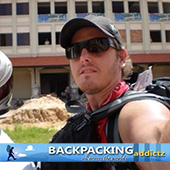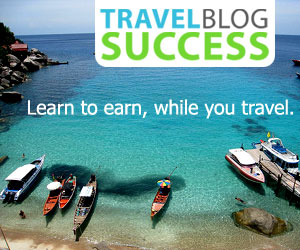- Population: 10.6 million (UN, 2005)
- Capital: Dakar
- Area: 196,722 sq km (75,955 sq miles)
- Major language: French (official), Wolof
- Major religion: Islam
- Life expectancy: 54 years (men), 57 years (women) (UN)
- Monetary unit: 1 CFA (Communaute Financiere Africaine) franc = 100 centime
The Republic of Senegal in West Africa is famed for its unique natural beauty, and more so for the Senegalese-American rapper and Grammy nominee “Akon” or Aliaune Badara Akon Thiam, and many successful individuals from politicians, models, authors, writers, and directors. Still, Senegal has not escaped the quintessential African construct of poverty, disease, and odd practices that violate human rights, this being no revelation anymore, like breast ironing or female genitalia mutilation. And in Senegal, it is “forced begging” of over 50,000 talibes or students in Islamic schools.
In fact, in September 2010, seven teachers who impose children as young as 3 to beg were found guilty, albeit still neither sanctioned nor imprisoned. Nonetheless, Senegal has heaps of natural gems to be unearthed from waterfalls, rivers, nature parks, islands and beaches, and with such astounding diversity, the exquisiteness of the place and the call of the djembe are too overpowering to resist, especially for the acquainted. But simply because this is a developing country does not mean travel is cheap. DO recall that Dakar is among the most expensive cities of Africa along with Victoria (Seychelles) and Niamey (Nigeria).
GEOGRAPHY
Senegal (14 00 N, 14 00 W), the western-most country of Africa, is a landscape of a total of 196,722 km2 of largely low sandy plains of the Sahel. Hence, the region is predisposed towards seasonal flooding, and while it is sandy, periodic droughts as well. The terrain changes into foothills in the southeast where the highest point is an unnamed tall feature near Nepen Diakha, 581 metres in height. Gambia within Senegal is its enclave almost, as the latter nearly engulfs the former in its territory.
CLIMATE
The climate is tropical for the most part, while it is also desert in the north. Thus, there is heavier vegetation in the southern areas. The tourist season is the densest from November to February when the weather is dry and cool. During the wet months from July to September, tourists are scant, but opportunely, the prices are good and discounted by 50% at most like the hotels.
PEOPLE
The Senegalese population is 13,711,597 as of the most recent estimations. Senegal, like most of Africa, has a wide diversity of ethnicities and languages where Wolof is the largest including 43.3% of the population out of 5 main groups. Among them are many indigenous tribes like the Fulani, Mandinka, Serer, Soninke, and Jola which are spread out in West Africa, and immigrants in thousands from Lebanon (1%), Europe (1.1%) that are mostly French, and Africa like Mauritania and Morocco. There also reside small populations of Vietnamese and Chinese in hundreds.
LANGUAGE
FRENCH is the official language, albeit used by an elite and literate minority. The Senegalese for the
most part speak their indigenous languages, and WOLOF, the national language, owns the largest demographic, and in Dakar, is the lingua franca. ARABIC is also used and taught in Islamic schools, while ENGLISH is deemed mandatory by some.
RELIGION
In accordance, Islam is the predominant religion that includes about 95% of the population. Issues related to religion are apparent in Senegal especially with the association of Islamic schools in forced begging, causing an internal stir within the Muslim community. Christians make up less than one-tenths of the population and is divided among Catholics and Protestants and its factions. Only 1% has remained with their animist beliefs.
ATTRACTIONS
Although Senegal’s Grand Market is a far cry from the essence of what is “grand”, Senegal is the place to be in West Africa, not only to enjoy the sun on the pasty ivory coasts or to connect with nature in the superb lush greens of the forest, but for far greater reasons than that. Senegal is Africa in a box, and Dakar, Senegal in a capsule. This is because Senegal has mainly what you’d expect or want in Africa, albeit nothing so grand.
The Parc Nactional Des Oiseaux Du Djoudj may not be anything like Serengeti or the Kilimanjaro Park, but it is deemed as one of the world’s most significant wetland bird sanctuaries, as significant as World Heritage Site Niokolo-Koba National Park. The Île De Gorée and Saint-Louis (capital of former French West Africa), both World Heritage Sites, own a certain rustic but quaint quality of a crumbling colonial heritage. These are the places to be for the cosmopolitan culture-vultures who are easily charmed by architectural wonders and calm of a jazz bar. To complete the mix, Dakar is your go-to for things hip, urban, and African, not forgetting its location at the tip of a peninsula lined with white-sand beaches – the perfect destination for that morning-after party.
FOOD
After all that partying, the great thing about Dakar, is that the place teems with the fresh fish, hence, the official dish of rice and fish, ceebu jen. The dish is regarded highly and integral to the Senegalese gastronomic experience, like Hainanese chicken is to Singapore. For that purposes and that it’s utterly delectable, be it with red or white sauce. Also, their rice and chicken dish variants with a kind of onion sauce, the yassa poulet as it is called is very delicious as well. At the same time, there are dishes that may once in a while or initially cause toilet trouble, the maafe could be it, or actually, it could perhaps be anything that is a peanut-based sauce or stew. The rich and thick flavours of the peanut sauce may be a new palate experience but it’s nothing short of good once it has gotten used to. It could be best to try the local grub in a home or a decent restaurant to avoid any undesired consequences from poor kitchen and cooking hygiene. Either way, there’s your typical western food fare should your digestive system react so defectively with the food.
***
Josh Boorman
Editor-in-chief
Backpacking Addictz
Twitter: @backpackaddictz
Backpacking Addictz is a website set up by backpackers for the use of backpackers. On this site you will find a lot of very valuable backpacking information surrounding different destinations and countries from around the world. Also very helpful backpacking tips and travel advice on planning a budget travel and backpacking adventure. You will also find an enthusiastic and insightful backpacking blog which is regularly updated with new posts and article.
GEObackpacking – connecting backpackers worldwide – is a social network for backpackers and independent travelers to meet and share their stories, blogs, experiences, photos, videos, tips and information. Join today for FREE and start connecting – geobackpacking.com







Leave A Response